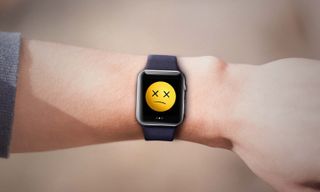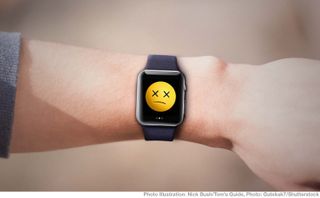Everyone Would Wear Smartwatches If They Had These Features
Smartwatches aren't indispensable... yet. But make these seven changes to add functionality and flexibility and you won't want to leave home without one.


Wrist-based computing used to be a sci-fi fantasy, but today, there are more than a dozen major smartwatches, and scores of off-brand models, on the market. There are four major watch operating systems with tens of thousands of apps among them. But smartwatches still aren't a necessary part of people's lives. You can't leave home without your smartphone, but there aren't enough compelling reasons to strap on a smartwatch, let alone pay hundreds of dollars for one.
Some say that the experience smartwatches offer is too similar to what you get on your phone. However, the real problem with today's wrist gadgets is that they don't offer enough functionality and flexibility to make them truly compelling. Here are seven things smartwatches need in order to become indispensable.
Always-on Face With Useful Data On It
The real beauty of having data available on your wrist is that you can check it quickly and discreetly. If you're wearing a regular watch, you can check the time by peering at it out of the corner of your eye, even if you're running down the street with your hands at your sides.
Unfortunately, most smartwatches have displays that turn off after just a few seconds of inactivity to save power, meaning that you can't even see what time it is without hitting a button or lifting your wrist all the way up to your face to wake the device. Try doing that when you're sitting in a boring meeting at work or you're out on a disastrous blind date. Android Wear and Samsung Gear watches allow you to enable an "always on" face, but that face is really dim and doesn't contain any info besides the time.
Because of their low-power e-paper displays, Pebble watches can stay on 24/7, which is a huge benefit. At one point when I was testing the Pebble Time, I had a sports app open and was able to walk around with it on and keep checking the score just by glancing down. All smartwatches should have always-on faces that show both the time and a ticker of key information such as most recent email subject lines, instant messages and SMS texts.
Fine Control Over Notifications
The most obvious use for smartwatches is notifications. The average smartphone user whips out a phone 150 times a day — a process that involves removing the device from your pocket or bag, unlocking the phone and then checking to see whether you have messages that require your attention.
The idea is that, by bringing alerts to your wrist, smartwatches can save you time. If you see the new email that came in is an urgent missive from your boss, you can respond right away; but if it's just a reminder about the company picnic, you can ignore it and leave your phone where it is. Sadly, no watch I've used gives me enough control over my notifications. I can set the watch to alert me about email in a given account, but it will buzz my wrist and disturb me, regardless of whether the message is from a co-worker or from a spammer.
MORE: Smartwatch Buying Guide: Everything You Need to Know
Part of the problem is that the email apps on the phone don't provide fine control over which messages are notification-worthy. A few apps, such as the Nine mail client for Android, allow you to create a VIP list and configure them to alert you only when you get messages from a sender on the list, but there's no way to get more granular than a list of names or set a different standard for which alerts you get on the phone versus which ones you get on your wrist.
The watch companion app itself should allow you to set detailed filters for which senders, subject lines or even conversations can appear as notifications, and you should be able to carry these settings across different messaging platforms. For example, I should be able to whitelist the same group of friends across Facebook Messenger, SMS, Google Hangouts, Skype and all my email accounts. I should be able to whitelist a domain so email from anyone in my company can buzz my wrist, but only if I'm in the From field and not the CC field — and definitely not if the subject line is "This week's lunch is ready."
Full, Unadulterated Messages
Most smartwatches cut off your messages after a certain amount of text is shown. In some cases, it's little more than the subject line, while in others, you see the first few paragraphs of the body. This also happens, just as annoyingly, in news apps like the CNN app for the Samsung Gear S2, which displays the latest stories but only the lead image and the first two paragraphs of content. If you want to see the rest, you have to open the message or article on your phone.
The software developers probably think that they're doing you a favor by not overwhelming you with too much information. But why force me to open another device just to finish what I already started on the watch? If I think the article is too long to read on my wrist or the email would look better on my phone's 5.7-inch screen than on my watch's 1.2-inch one, I'll switch devices on my own accord, thank you very much. My 3-year-old gets more respect and freedom of choice than smartwatch vendors give their customers.
To be truly useful, a smartwatch has to be more than just a hype man for your handset.
The Ability to Reply
If you get a message on your wrist and deem it important, you shouldn't have to launch your phone to reply to it. Some smartwatches let you issue canned replies, others give you the ability to dictate a response that is converted to text, and a handful give you a virtual keyboard to type on. However, even the most flexible wrist pieces don't let you reply to every kind of message. For example, I was able to reply to messages from my default email client but not from Outlook for Android when using the Gear S2.
A Navigable UI
The ideal interface for a watch puts the most important functions and information just a few swipes, taps or button presses away. It should also make finding archival information such as old notifications easy and seamless.
Google's Android Wear OS, which powers more than a dozen watches from different companies, is a terrible interface. Alerts appear in an unpredictable stream as you swipe down from the face. Want to see what your last five emails were? Saw an alert about a new Gmail message while you were jogging and want to read it now that you're done? Keep moving that finger until you find what you want, provided that it's still there. Google thinks it's doing you a favor by prioritizing information for you. It's not.
The Pebble Time OS makes it easy to browse through your last several alerts and open them, but getting to the apps takes a bit more effort. The Samsung Tizen UI on the Gear S2 has a wonderful app drawer that's one screen away from the watch face, but its notifications disappear after a few minutes. The Apple Watch makes it easy to access your notifications (just swipe down from the top of the screen); however, its app menu is a mess of tiny icons.
Speaker, Call Handling
Do you really want to make phone calls from your wrist? Hell yes. Although Android Wear watches, the Pebble Time and the Gear S2 all have microphones for issuing voice commands, they don't have a speaker that lets you actually talk to someone, even if that someone is the built-in voice assistant. The Apple Watch does let you call a person, but when you ask Siri a question, her answer is only displayed as text. The speaker is also kind of weak.
MORE: Our Favorite Smartwatches for iOS and Android
You can argue that, if you really want voice communications or audible feedback from software, you should just pick up your phone. However, there are times when you just want to leave your phone in a bag or on the other side of the office. All of the latest watches have Wi-Fi that allows them to maintain a connection to the Internet, even if they are too far to maintain a Bluetooth pairing with your handset. I should be able to use my watch to make a hands-free call or ask Google Now about the weather when I'm driving and get a spoken reply.
Front-facing Camera
A lot of my journalist colleagues derided Samsung for putting an outward-facing camera on its Galaxy Gear and Gear 2 watches, both of which are now defunct. If all you want to do is capture photos of your family, then adding a low-res, crappy sensor to your watch is useless; you'll just use your phone.
However, if you put a front-facing camera above the screen — something no major smartwatch manufacturer has done — you make video calling from the wrist possible, which would enable a whole new world of face-to-face chat. Imagine talking to a friend while you walk down the street and turning your wrist so he or she can see something you are seeing?
Even better than a front-facing lens would be one that rotates to face front or sideways. You could then point the camera at bar codes to get more information about a product or at a foreign-language sign to get a translation. Why take out your phone and launch the camera app for information you need quickly?
Bottom Line
To be truly useful, a smartwatch has to be more than just a hype man for your handset. It has to empower users to decide how much and what type of information they want to consume on their wrists, rather than just telling them off on their phones. Vendors shouldn't be worried about offering too much functionality on their watches; they should be trying to push the envelope of what's possible in such a small device.
Sign up to get the BEST of Tom’s Guide direct to your inbox.
Upgrade your life with a daily dose of the biggest tech news, lifestyle hacks and our curated analysis. Be the first to know about cutting-edge gadgets and the hottest deals.
